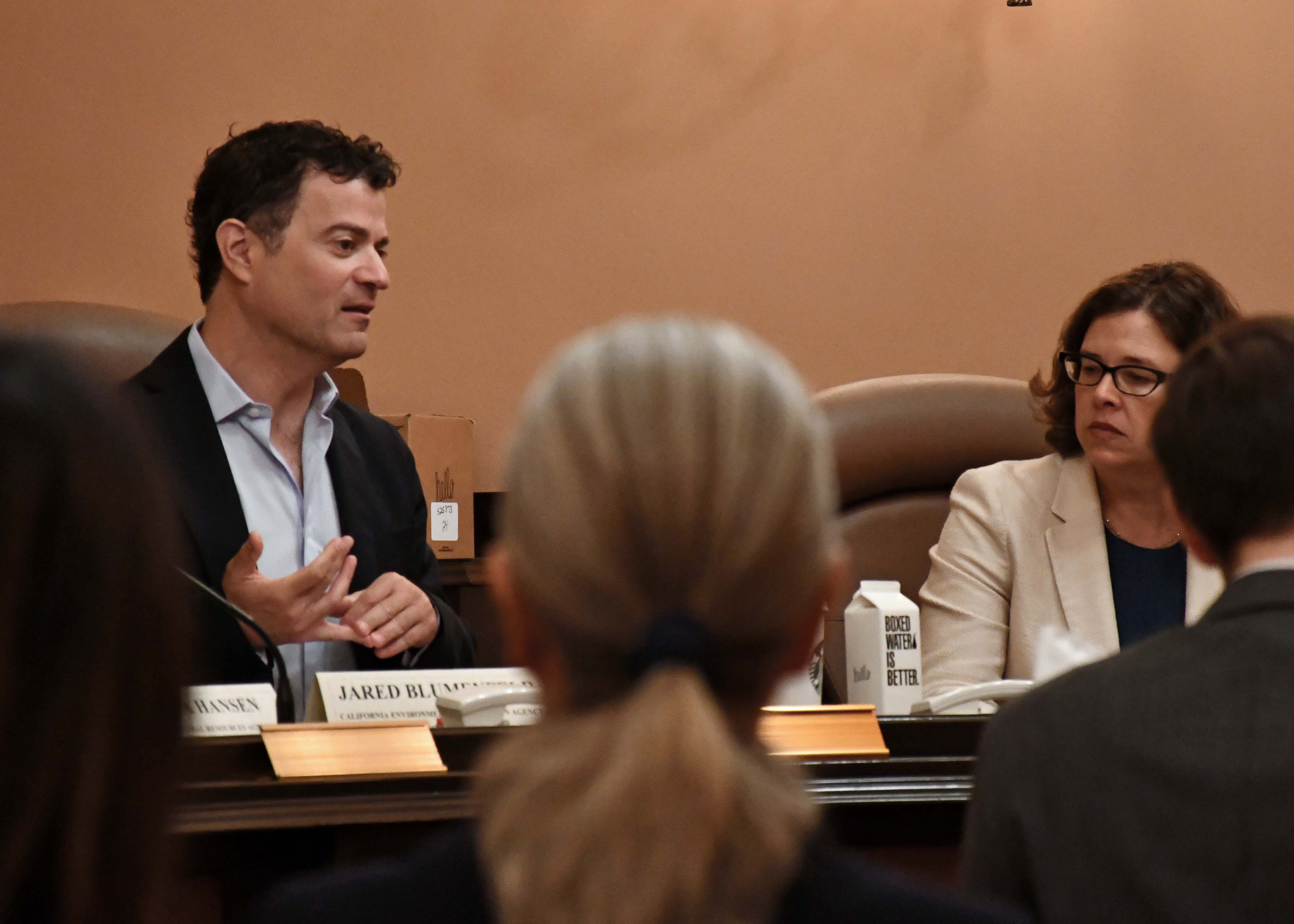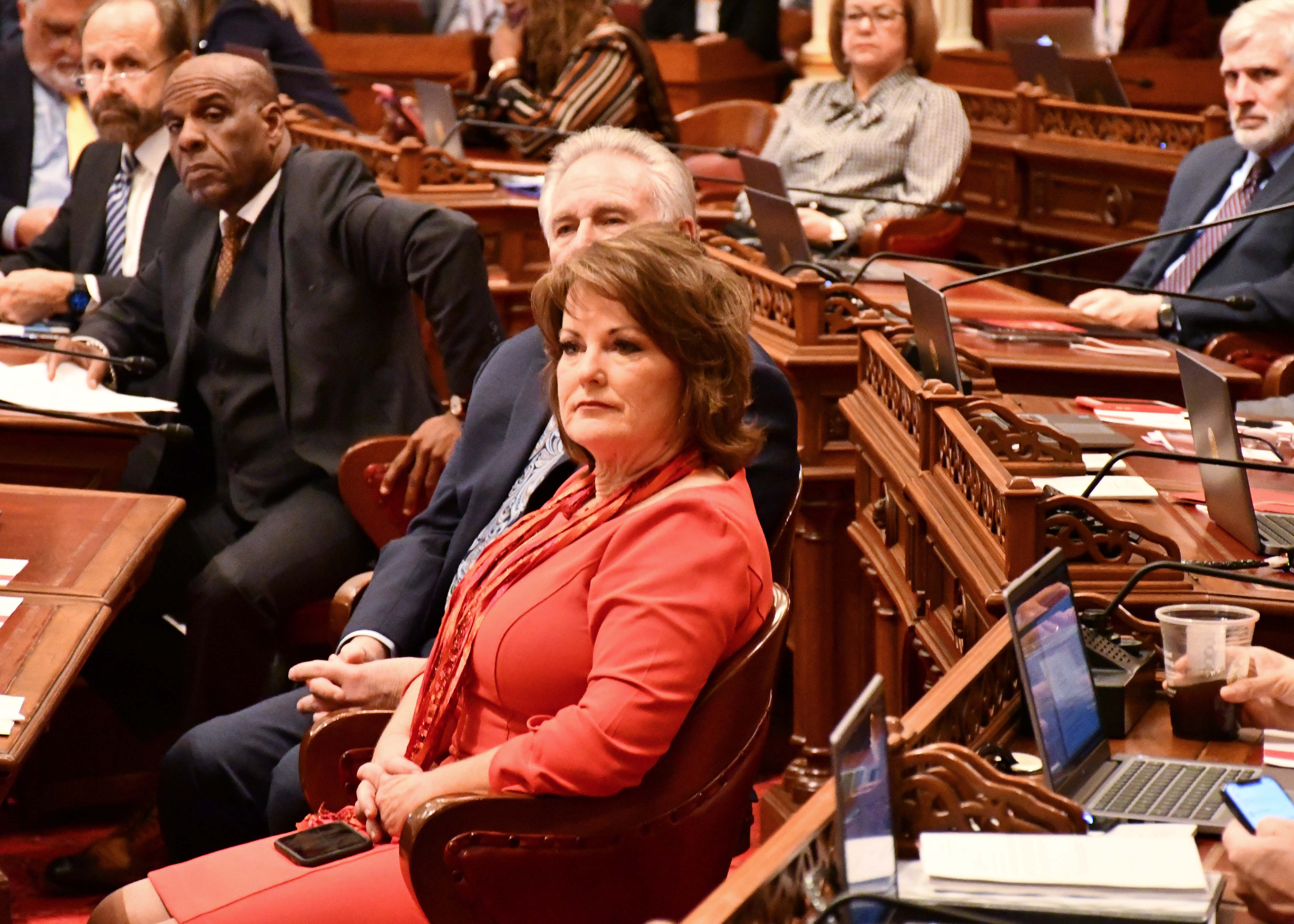Gov. Gavin Newsom released a record-setting $220-billion budget proposal on Friday. The draft budget further broadens the governor’s growing list of environmental priorities through a new $12-billion “Climate Budget.”
“This governance proposal is the most comprehensive and collaborative environmental budget in our state's history,” proclaimed California Environmental Protection Agency Secretary Jared Blumenfeld during a media call.
More cuts to climate-smart ag
To finance the Climate Budget, the governor is tapping into four revenue streams in what Natural Resources Sec. Wade Crowfoot called a push for “aggressively diversifying climate funding.” This includes pulling cap-and-trade money from agricultural incentives programs that focus on reducing greenhouse gas emissions and were begun under former Gov. Jerry Brown.
“The biggest single change is that, in the last administration, we focused in a very targeted way on mitigation,” explained Blumenfeld. “We're really focusing now, in addition, on resiliency and sequestration – using natural working lands to absorb carbon.”
The proposed funding from the current state funds, however, show less money invested in working lands.
When Newsom has mentioned agriculture in press conferences, he was usually referring to CDFA’S Healthy Soils Program. The practices are known to sequester carbon and reduce emissions. Yet Newsom’s January budget proposes to cut funding to that program by more than 30%, down to $18 million.
Methane reduction programs would also see $12 million less, with a proposed $20 million. This includes the dairy digester program, which the state’s Legislative Analyst’s Office (LAO) has found to be the most cost-effective among the many emissions reduction programs. Brown had allocated $99 million for those programs in his last two years in office.
With the implementation of the Sustainable Groundwater Management Act (SGMA) beginning this month, the administration has pointed to Healthy Soils as well as the State Water Efficiency Enhancement Program (SWEEP) as ways it is helping farmers adapt. Newsom is proposing to again fund SWEEP with $20 million. Last year that money came solely from Proposition 68 funding.
The FARMER program for upgrading ag equipment was cut by $15 million, down to $50 million. Notably, the governor’s January budget in 2019 began with a similar amount for FARMER. In his May revision, he bumped the funding up to $65 million. Brown had provided the program with $122 million from the Greenhouse Gas Reduction Fund (GGRF) in 2018. Trade groups advocating for FARMER have argued the cut has now led to a backlog of applications worth nearly $200 million.

CalEPA Sec. Jared Blumenfeld
Among the many responses to the budget, the California Climate and Agriculture Network (CalCAN) approved of Newsom’s strategy in diversify funding sources, but was disappointed with the cuts.
“We urge (Gov. Newsom) and the Legislature to be more ambitious and make larger investments in our rural communities and our food supply,” said Policy Director Jeanne Merrill in a written statement. “Reaching the state’s net carbon neutrality goal by 2045 depends upon it.”
The GGRF is also being tapped for funding to address sea level rise, wildfire prevention and safe drinking water.
According to the budget summary, the governor is also allocating $350,000 for a work group to more broadly promote sustainable pest management alternatives to chemical pesticides. That number is down from the $5.7 million Newsom allocated last year for both the group and research into alternatives to the insecticide chlorpyrifos.
Bond money to finance water projects
Some of those dollars lost in incentives programs would be replaced with funding from a $4.8-billion climate resilience bond proposed by the governor.
It would fill in gaps for Healthy Soils and SWEEP, while supporting nutrient management practices, on-farm habitat restoration and carbon sequestration projects. It also proposes $250 million for emergency response centers focused on climate issues, including fairgrounds managed under CDFA.
More than 60% of the bond funding would go to policy actions outlined in the Water Resilience Portfolio. The budget outlines $1 billion of bond money for a range of water projects that would include storage, conveyance and stormwater capture. The Salton Sea cleanup program would receive $220 million from the bond – enough to complete the 10-year project and assuage the concerns of local irrigation districts as they negotiate a new long-term agreement for the Colorado River.
The budget also sets aside $60 million from the General Fund to support pilot projects for water trading and water efficiency improvements to help farmers and communities adapt to SGMA.
Large bonds can be a risky bet, however. UC Davis Professor Jay Lund told the State Water Resources Control Board in August that 85% of the problem is local and large bonds are not the answer to the state’s water infrastructure issues. Two of his students also performed an autopsy on the $8.9-billion Prop. 3 water bond in 2018, finding that “voters have shown that they’re unwilling to just throw money at state water problems.”
Convincing voters may be even more difficult when the state has yet to spend all of the $7.5 billion in water bond money from Prop. 1 in 2014. Ellen Hanak, who directs the Water Policy Center at the Public Policy Institute of California, told Agri-Pulse the local partners are just waiting on the state to make the permitting happen. The administration does outline in the water portfolio an intention to streamline these permits.
Two existing bills offering a $4-billion climate and water bond have spent the last year winding through the Legislature and are slated for hearings next week. Lawmakers have until the end of January for the respective houses to approve the measures. Another ballot initiative in circulation would put $7.9 billion towards the climate and wildfire issues. Those November ballots will likely be crowded with other major initiatives as well, which seek reforms on AB 5, homelessness and Prop. 13.
A climate fund would instead lend the money
The administration is also proposing a $1-billion Climate Catalyst Fund, which would offer businesses low-interest loans for infrastructure improvements and green tech. This would also support the dairy digester, SWEEP and FARMER programs, as well as composting projects and wood waste reuse.
The fund borrows buzzwords from two ambitious recycling bills aimed at reducing single-use packaging, which Newsom put his support behind during the budget press conference. Those bills are expected to return this year. Newsom is also promising to reform the Container Recycling Program, while legislators want to overhaul California’s Bottle Bill this year and extend it to wine. The fund would likely play a part in financing the initiatives.
Instead of a broad climate fund granting loans to farmers, however, Jeanne Merrill of CalCAN would rather see more spending from the cap-and-trade fund and a potential bond.
“Farmers are unlikely to take on additional debt, particularly small, diversified and socially-disadvantaged farmers, as well as the state’s dairy farmers, who have been operating in a deficient state for several years,” she said.
Rural communities get the governor’s attention
If the Legislature passes this budget in June, an ag economist will be joining CDFA to report on rural issues like the impacts of SGMA. The governor vetoed a similar proposal in October from Assembly Bill 417.
In returning to promises in his State of the State address last year, Newsom wants to support the San Joaquin Valley with $33 million in seed money for a new Fresno-Merced Food Innovation Corridor Grant Program. The initiative, led by CDFA, would stimulate research and development for technology that supports sustainable agriculture and food processing, while drawing high-quality jobs to the area.
The administration also anticipates spending more than $900 million on broadband access over the next five years. This includes supporting better mapping for gaps in connectivity – an effort the Federal Communications Commission has been heavily criticized for in the state.

State Senate Republican Leader Shannon Grove
Newsom is continuing cap-and-trade spending for the AB 617 air pollution reduction program with $235 million allocated to the Air Resources Board. The program incentivizes ag and other industries to upgrade equipment and adopt new practices to improve air quality in the state’s most critically polluted regions, such as Shafter, Fresno and soon the Coachella Valley. Blumenfeld said this and other programs make up for GGRF spending cuts to clean transportation programs.
On the note of transportation, State Senate Republican Leader Shannon Grove shared her disappointment with the governor in allocating $20 million towards enforcing the new AB 5 law on independent contractors. Ag haulers, however, have received a temporary exemption from the law, and two recent decisions by state and federal judges in ongoing lawsuits signal that will likely become permanent.
“We should be using this funding to house Californians instead of preventing them from earning an income the way they choose,” she said in a statement.
The budget summary also points out that a California sales tax exemption for both food processors and power generation will lead to a savings of $277 million this year for those businesses.
The nod to rural issues has garnered the support of the California Farm Bureau Federation (CFBF).
“The proposals contained in his draft budget reflect (Newsom’s) concerns for the future of farmers, ranchers and the rural areas they support,” said CFBF President Jamie Johansson in a statement.
For more news, go to: www.Agri-Pulse.com


